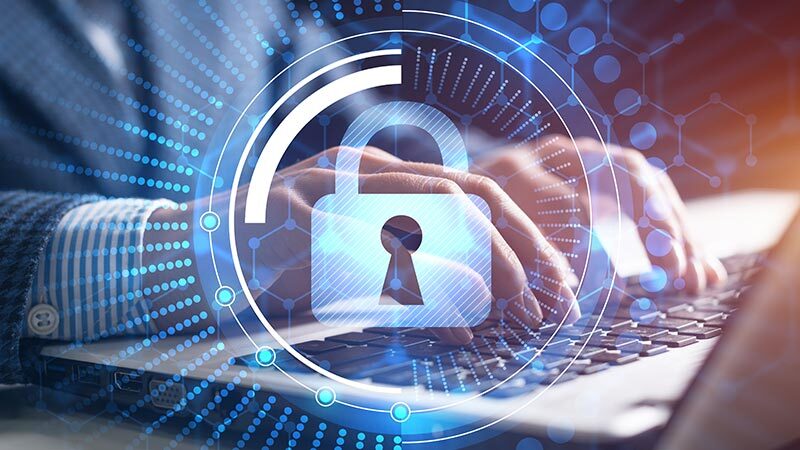Why the Best Cyber Security Services in Dubai Are Necessary for Every Service
Checking Out Just How Cyber Protection Works to Safeguard Your Online Existence
In today's electronic landscape, securing one's on-line visibility has actually ended up being significantly vital, with cyber risks progressing at a startling rate. Cyber protection uses a multifaceted strategy, integrating innovative modern technologies like firewall programs, security, and multi-factor authentication to protect sensitive details. The intricacy of these systems elevates inquiries regarding their effectiveness and application. How do these modern technologies work together to produce a seamless shield versus cyber risks? And what duty does behavior analytics play in this elaborate web of security measures? These are essential questions that merit more exploration in our quest for electronic safety.
Recognizing Cyber Risks
In the electronic landscape, cyber threats stand for a formidable difficulty, calling for a nuanced understanding of their nature and potential effect. These risks include a large range of malicious tasks orchestrated by people, teams, and even nation-states, targeting delicate information, interfering with procedures, or triggering reputational damage. Recognizing cyber dangers begins with identifying the various forms they take, including malware, phishing, ransomware, and dispersed denial-of-service (DDoS) assaults.
Malware, or destructive software program, consists of infections, worms, and trojans that infiltrate systems to take data or trigger injury. Ransomware secures victims' data, demanding a ransom for its release, posing significant operational and monetary dangers.
Recognizing the motivations behind these threats is essential. By adequately recognizing the diverse nature of cyber risks, organizations can much better prepare for prospective vulnerabilities and strategically allocate sources to boost their defenses against these ever-evolving threats.
Key Cyber Protection Technologies
As companies aim to secure their digital properties, essential cybersecurity technologies play a critical duty in fortifying defenses against cyber risks. IDS screen network website traffic for dubious tasks, while IPS proactively obstruct possible hazards, ensuring real-time protection.
Furthermore, antivirus and anti-malware options stay essential in recognizing and minimizing destructive software. They employ heuristic and signature-based techniques to discover unidentified and well-known hazards. Endpoint discovery and response (EDR) systems further enhance safety and security by offering comprehensive visibility right into endpoint tasks, making it possible for speedy occurrence feedback.
Identification and access administration (IAM) modern technologies ensure that only licensed individuals access to vital resources, consequently reducing the risk of unauthorized data gain access to. Multifactor verification (MFA) includes an additional layer of security, needing users to give numerous confirmation aspects.
Furthermore, safety and security information and occasion administration (SIEM) systems aggregate and analyze protection information, providing insights right into potential vulnerabilities and assisting in proactive risk monitoring. These innovations jointly create a robust structure, encouraging companies to preserve a durable cybersecurity pose.
Function of Firewalls and Encryption
By regulating outgoing and incoming network web traffic, they stop unapproved accessibility to systems and information. Firewalls utilize predefined safety and security policies to obstruct or allow information packages, successfully securing delicate details from cyber threats.
Encryption, on the other hand, transforms readable data into an encoded format that can only be deciphered with a specific cryptographic key. This process makes sure that information continues to be confidential and secure during transmission or storage space. Also if obstructed, secured info is made pointless to unapproved individuals without accessibility to the decryption trick. Security is important for shielding sensitive information such as economic information, individual identification details, and proprietary service info.
With each other, firewall softwares and file encryption provide a thorough defense reaction. While firewalls handle access and shield networks from unauthorized access, security safeguards data integrity and confidentiality. Their integrated application is necessary in mitigating risks and guaranteeing the safety of electronic properties in a progressively interconnected globe.

Relevance of Multi-Factor Authentication
While firewall softwares and encryption create the foundation of cybersecurity, enhancing defenses further requires the application of multi-factor verification (MFA) MFA adds an extra layer of security by calling for customers to validate their identification through two or even more different elements prior to getting to sensitive details or systems. These factors normally include article source something the user recognizes (a password), something the individual has (a protection token or mobile phone), and something the individual is (biometric verification such as a finger print or facial recognition)
The importance of MFA in guarding on the internet presence is extremely important in today's electronic landscape. With cyber risks becoming significantly advanced, depending solely on typical password-based verification leaves systems vulnerable to violations. MFA substantially decreases the threat of unapproved access by making it exponentially extra tough for cybercriminals to endanger an account. Also if a password is swiped, the added confirmation actions function as a powerful barrier.

Behavioral Analytics in Cyber Security
Behavioral analytics stands for a crucial innovation in cybersecurity, using an advanced method to threat discovery and prevention. By analyzing patterns in customer actions, this technique determines abnormalities that may suggest potential cyber risks. Unlike typical safety measures, which commonly depend on predefined policies and trademarks, behavioral analytics leverages artificial intelligence and statistical designs to develop a standard of normal activity. When variances from this standard occur, it sets off signals for further investigation, allowing quicker feedback times to potential breaches.
This innovation is especially efficient in finding expert hazards and zero-day strikes, which are often missed out on by standard security systems. Expert threats, where individuals within an organization misuse access privileges, can be particularly damaging and challenging to discover. Best Cyber Security Services in Dubai. Behavioral analytics offers a layer of scrutiny that can catch subtle discrepancies find this in behavior, such as unusual access patterns or data transfers, prior to they rise right into substantial safety occurrences
Moreover, the dynamic nature of behavioral analytics allows it to adjust to developing risks, offering continuous defense as cyberattack methods alter. As organizations progressively rely upon digital infrastructures, including behavioral analytics right into cybersecurity approaches ensures a durable defense, protecting sensitive data and maintaining count on digital communications.
Verdict
Finally, the complex technique of cyber protection, including technologies such as firewall programs, security, multi-factor verification, and behavioral analytics, plays an important role in shielding on the internet presence. By filtering system traffic, safeguarding data transmission, calling for numerous confirmation methods, and keeping an eye on individual activity for abnormalities, these technologies jointly attend to the complexities of modern-day cyber hazards. This split protection not only safeguards personal and financial info yet also makes certain continuous protection in an ever-evolving digital landscape.

As companies aim to safeguard their electronic possessions, key cybersecurity modern technologies play a vital function in strengthening defenses versus cyber threats. Firewalls make use of predefined protection policies to block or allow information packets, effectively securing sensitive details from cyber dangers.This technology is particularly efficient in discovering expert dangers and zero-day attacks, which are frequently missed by conventional security systems. By filtering system traffic, securing information transmission, requiring numerous verification methods, and checking individual activity for abnormalities, these modern technologies jointly attend to the complexities of contemporary cyber threats.